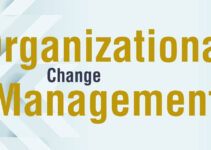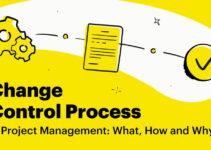According to the McKinsey research study, approximately 70% of change management programs fail to reach their goals and objectives; due to poor communication. Successful companies communicate change programs internally and externally; it is crucial when you are communicating to a mass audience. Today, we’ll discuss communicating change management to employees; top practices and strategies, medium of communication, and communicating change to workforce.
Gartner’s study showed the following results;
- Only 34% of the change management projects achieve clear success for companies
- 50% of the change initiatives fail
- 16% of the change programs achieve mixed programs
- 73% of the employees experience high levels of stress in the change program
Type of Communication Strategies
- Visual Communication – employing visual modes like films, videos, graphics, photos, drawings, etc.
- Careful Listening – actively listening to what the other person is saying
- Written Communication – convening written information for others to read
- Non-verbal Communication – facial expression, body language, and other cues
- Verbal Communication – speaking and talking to the team members
Stages of Change Communication Model
- Awareness – employees become aware of the upcoming changes via internal communication channels
- Understanding – guiding employees by answering how, what, why, and where change questions
- Acceptance – supporting and facilitating employees to accept the changes
- Commitment – open communication until everyone adopts changes
Benefits of Communicating Change to Workers & Employees
- Lowers employee’s resistance level
- Higher productivity of the organization
- Collaborative workplace environment
- Amplifies the success rate of the change program
Top Practices for Communicating Change Management to Employees
Let’s discuss the top practices and tips for communicating change management to employees; they’re as follows;
Truthful & Open About Change
Instead of sugarcoating the challenges and difficulties and hiding the key details of the change project. You should use simple and straightforward language with your employees and clearly tell them the changes and give a reason for them. While talking, you should avoid talking down to your employees as it would create feelings of being undervalued and resentful. Employees and team members would appreciate the clear, open, and honest communication about the change project.
Empathize & Human Side
The change program often increases the personal chores and responsibilities of employees. For instance, it may require them to participate in the training session, bring lifestyle changes, or focus on the areas that are most significant. You should keep these concerns in mind while communicating changes to them. Therefore, you should listen to them, empathize, and make them feel heard, and comprehend their predicament towards building trust and confidence.
Benefits for them
In order to bring them on board with the change program, you should include the benefits of the change initiative for employees. You should acknowledge the fact that things would be good after implementing the changes. For instance, if there is an upside to executing the changes, then admit it and tell them clearly. It is significant to thank employees for their patience and gratitude.
Goals of Change Communication
It is easy to bring employees and team members on board about the change when you have clear goals, objectives, expectations, and end picture of the change project. While doing so, you should explain the whole change initiative journey step-by-step. It clearly informs employees of the road ahead of the change project.
Clear CTA (Call-to-Action)
You have to be precisely clear about the changes and what types of changes and actions they have to do. At the end of the communication session, employees and team members want clear steps and changes that they need to make. If the change project doesn’t have a clear step, then you should create one and involve them in the transition phase.
Add Leadership’s Views
The effectiveness of the change communication message would increase; if the change message is coming from the top of the management; VP, CEO, or senior executive. You should employ multiple media channels to effectively deliver the change message to the customers. They are like home mailing, the company’s platform, face-to-face meetings, emails, and others. While doing so, you should include all the details of the change program.
Targeted Communication Approach
The change communication should be clear, well-focused, and targeted in terms of affected employees and roles; and the steps they need to take. For instance, if the change program is about healthcare; communicate clearly that it is specifically for those who are experiencing chronic conditions. The precise targeted approach to the change project would avoid overwhelming the entire organization.
2-Ways Open Communication
Instead of communicating on one side, you should have two-way communication. The 2-way communication allows you to answer their questions, queries, and concerns about the change initiative. It would help you to clear the air about the misconceptions and concerns of the change program.
Shared Vision
While communicating changes, you should consider developing a link and connection between the company’s change destination and employees’ career growth. It is significant to inform them how the overall change initiative is not only good for the company’s growth, but it is beneficial for their career and profession.
Storytelling Approach
You should employ a storytelling approach to attract the attention of employees and team members and bring them on board with the changes. Storytelling works magically and it allows the company to connect with the customers at a personal emotional level.
Conclusion: Communicating Change Management to Workforce |Communicating Change to Employees
After an in-depth study of communicating change management to employees; we have realized that change communication is highly significant to the success of the change project. If you are learning about communicating change to workers; then you should keep in mind the abovementioned tips, strategies, benefits, and research results.
Ahsan is an accomplished researcher and has a deep insight in worldly life affairs. He goes Live 3 days a week on various social media platforms. Other than research writing, he’s a very interesting person.


